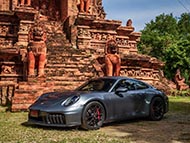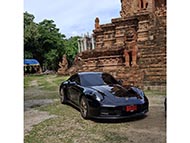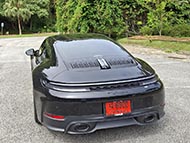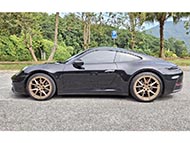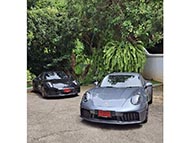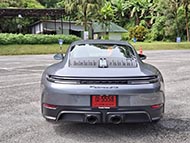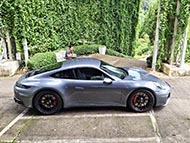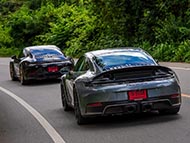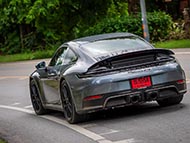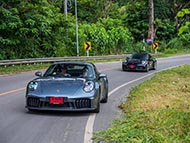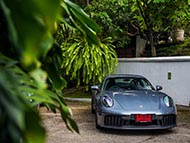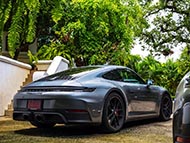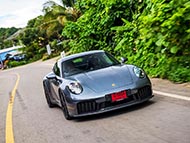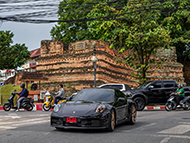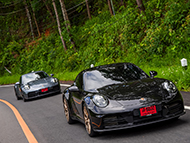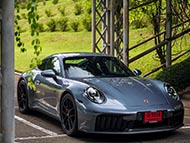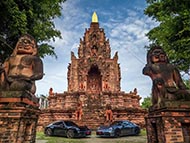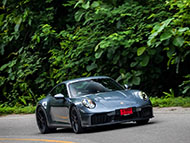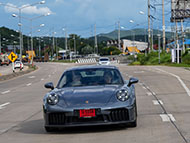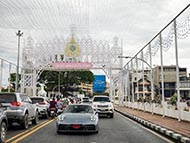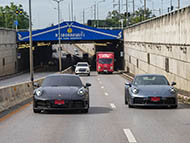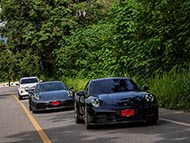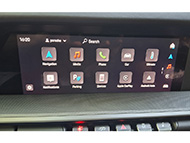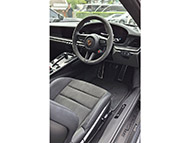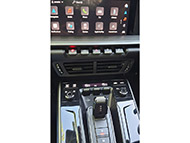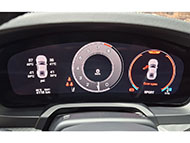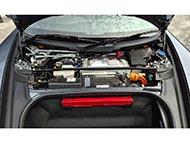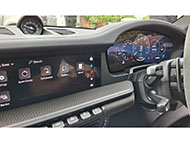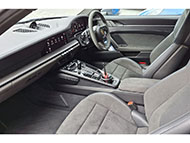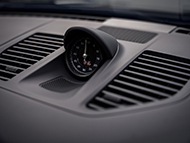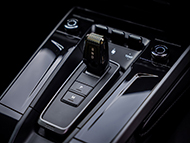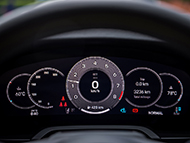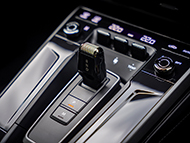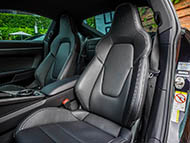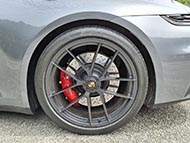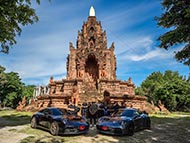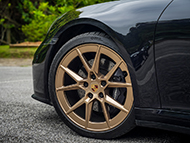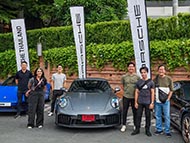By Lee Pang Seng
THE Porsche 911 is the icon of this German sports car brand since it was introduced in the early 1960s. Its unusual body profile with rear mounted engine, which probably took inspiration from the VW Beetle, clicked immediately with the well-off crowd wanting to be seen in a fashionable sports car.
This set of numbers – 911 – represented what Porsche was all about right from the beginning; a no-nonsense sports car with a unique profile to match. It’s a pity those set of numbers also reminded people of darker days in 2001, September 11 to be exact. (I could still recall seeing the moment that the American Airlines Boeing 767, piloted by religious terrorists, crashed into the north tower of the World Trade Centre in New York via the live news broadcast on TV. It was shocking and incredulous, and how that tightened security in air travel till today.)
Back to the 911, those old enough would recall seeing these numbers on the many Mercedes Benz short-nose trucks that plied the roads in the 1960s and 1970s. We didn’t have the patience to scroll the net to find out why the numbers ‘911’ were adopted by Mercedes-Benz for the trucks from 1963, which were known as the LA 328 earlier.
Coincidentally, the Porsche 911 was introduced in September 1964. Somehow, there appeared to be some canny connection in all of that information. Nevertheless, we shall stick to the present and delve on one of our most enjoyable drives in two of the latest Porsche 911 models through the winding hill roads of Chiangmai.
These were the latest generation Porsche 911 Carrera and Carrera 4 GTS that were launched in Malaysia in April. The drive in Chiangmai was Porsche Asia Pacific’s way of letting the auto journos in the region let their hair down through the winding and hilly roads to the west of Chiangmai. We have covered these roads over the years in a variety of vehicles – pickups, SUVs (sport utility vehicles) and BMWs – so we were not totally a stranger to this part of Thailand.
While the BMW drive involved a mix of models for us to gauge them in their respective role, the Porsche 911 experience was solely on sports cars that allowed us to enjoy its on-road drive at breathtaking speeds. We had a lead car to guide us on approaching traffic and that helped tremendously when taking the respective Porsche 911 speedily through the winding stretches, especially when overtaking slower vehicles with limited view of on-coming traffic.
Between the two Coupés – the 911 Carrera is rear-wheel drive while the GTS is all-wheel drive – we were charmed more by the GTS due its greater individual design touches. Our eyes were immediately drawn to the five vertical active cooling flaps per side on the lower apron against the simpler and less forward horizontal flaps for the Carrera.
Porsche says that for the first time in the 911, these are complemented by adaptive front diffusers in the underbody, which are controlled together with the cooling air flaps. These elements direct the air flow as required: when power requirements are minimal, the closed flaps obviously optimise aerodynamics. When power demand is high, such as on-track driving, the flaps direct large amounts of air to the car’s radiators. Yes, the GTS is track ready.
This easily complement the fresh design elements for the new generation 911, such as the new model-specific bumpers. Another first, according to Porsche, is integrating all light functions into the now standard matrix LED (light emitting diode) headlights with their characteristic four-point graphic. This made it possible to omit the front driving lights and creates space for larger cooling vents.
The rear sees a redesigned light strip with an integrated arc and the ‘PORSCHE’ logo for a deeper and wider look. There is also a redesigned rear grille with five fins per side that connects to the rear window to form a graphic unit that fades into the retractable spoiler below. This fresh design offers a more complementary balance between front and rear for the GTS.
Model-specific exhaust systems are integrated into the striking diffuser fins. These were clearly seen in the 911 models we drove; the 911 Carrera GTS comes standard with a GTS-specific sports exhaust system that has the tailpipes next to each other in the centre. The 911 Carrera has a tailpipe at each end. With that, you could visually tell which is the faster model that you are following.
Exciting power
The GTS is clearly the more exciting of the two in power systems. It is the model with the bigger displacement three-opposed or flat six engine (Porsche calls it the boxer engine). The only other car brand that uses such an engine design is Subaru but it uses the flat four or twin opposed unit. The GTS has a 3.6-litre (3591cc) engine with an enlarged 97.0mm bore and short 81.0mm stroke that increased the displacement by 0.6 litre compared to the predecessor.
Another key note here is that it is a hybrid system. Porsche describes it as a ‘lightweight and powerful T-Hybrid (Turbo Hybrid) system’ with a newly developed electric exhaust gas turbocharger. An integrated electric motor, placed between the compressor and turbine wheel, instantaneously brings the turbocharger up to speed as it immediately builds up boost pressure.
The electric motor in the exhaust gas turbocharger also functions as a generator, generating up to 11kW (15PS) of electric power. This energy is extracted from the exhaust gas flow. Porsche says the wastegate-free electric turbocharger allows the use of only one turbocharger instead of the previous two, which ensures a more dynamic and responsive power delivery.
The powertrain also includes a permanent magnet synchronous motor integrated into the new, more powerful eight-speed dual-clutch transmission (PDK). Even at idle speed, it supports the boxer engine with extra drive torque of up to 150Nm and provides a power boost of up to 40kW. Porsche adds that both electric motors are paired up to be a lightweight and compact high-voltage battery.
It is said to correspond in size and weight to a conventional 12-volt starter battery, but stores up to 1.9kWh of energy (gross) and operates at a voltage of 400V. For an optimised overall weight, Porsche installed a lightweight lithium-ion battery for the 12V on-board electrical system. The high-voltage system allows the air-conditioning compressor to be driven electrically and this has the belt drive to be omitted as a result, making the engine much more compact. This creates space above the power unit for the pulse inverter and DC-DC converter.
Output is higher than the preceding model at 357kW (485PS) at 6500rpm and 570Nm ay 2000rpm, with engine speed capped at 7500rpm (power increase over the predecessor is 45kW/61PS). Combined with the 41kW electric output, the figure goes up to 398kW (541PS) and 610Nm. Although as a hybrid, the new 911 GTS is a heavier sports car by 50kg, it is still faster than the previous model; 0-100km/h in a quicker 3.0 seconds with Sports Chrono Package, 0-160km/h in 6.8 seconds and 0-200km/h in 10.5. Top speed is 312km/h while the combined fuel consumption is 10.7L/100km (9.3km/l).
The 911 Carrera is the less exciting of the two but its engineering credentials are nothing to be sneered at. It retains the 3.0-litre boxer configuration with twin turbocharging but Porsche says the engine is ‘comprehensively revamped’. It now adopts the intercooler from the Turbo models, which sits directly under the rear lid grille, above the engine. The turbochargers in the new generation 911 were previously reserved for the GTS in the preceding model.
With the modifications, Porsche says a simultaneous reduction in emissions was achieved while power was boosted to 290kW (394PS) and a maximum torque of 450Nm. The new 911 Carrera accelerates from 0-100km.h in 4.1 seconds (3.9 with Sports Chrono Package), faster by 0.1 second, and a top speed of 294km/h (up 1km/h).
Chiangmai drive
We started with the 911 GTS. As a track-ready car, our expectation of a firmer ride was fully met. We virtually felt every bump, pothole and road ripple, not in a jarring way but enough to tell you that it was performance sprung in suspension tune. Porsche says the GTS suspension was comprehensively revised. For the first time, rear-axle steering now comes as standard.
This is said to increase stability at high speeds and reduces the turning circle for the winding stretches. Porsche adds that this enables the use of an electro-hydraulic control system, which makes the system even more flexible and precise. The sports suspension has a variable damper system (PASM) and a ride height lowered by 10mm to provide ‘characteristic GTS handling’.
With all that in mind, we were looking forward to our drive as we remembered a few twisty sections that we enjoyed driving through over the years. Firstly, that strong surge of power each time we hit the accelerator pedal already had our ‘aggro juices’ gushing forth. The throaty sound of the boxer engine via the guttural sports exhaust system was simply music to the years. It was pure joy feeling the rush of speed as we overtook the slower traffic that was virtually a blur as we roared past.
We have enjoyed exhilarating race track driving with the Audi R8, Lamborghini Huracan and Porsche Cayman, exciting sports cars under the same VW umbrella, but our Porsche drive experiences usually cover public roads as well. We prefer those with lead cars as we are forewarned of any approaching traffic such as the one in Taiwan in 2017 with the Porsche Panamera.
And we enjoyed the drive in Chiangmai too for the same reason; having a lead car to warn us while going at very good speeds through the twisties for us to fully enjoy what sports car driving was all about. And with its high credentials, the Porsche 911 GTS gave us the confidence to ‘attack’ the respective corners and flowing winding stretches with gusto.
Steering turn-in was as accurate as we would want it, allowing us to point in the direction that we want and exit cleanly as we prepare to take the next corner. There was barely a trace of body roll and the eight-speed PDK auto selected the ‘proper’ gears for the respective corners to give us the power traction we needed. And with the engine in correct rev range, the uptake of strong road speed as we exited the corner allowed us a ‘point-and-shoot’ experience that we thoroughly enjoyed.
We had one oversteering moment when our steering wasn’t fully straight ahead and we floored the accelerator. But the self-correcting dynamics of the GTS remedied the momentary imbalance and allowed us to continue the drive without any further drama. We also felt and heard the rear axle steering working when we took to a series of hairpin corners, but the GTS remained steadfast to its sports car dynamics.
Complementing the GTS suspension were the Goodyear Eagle F1 tyres; with the size of 245/35 R20 in front and 315/30 ZR21 at the rear. As its name suggests, it is a UHP (Ultra High Performance) tyre and gave us good grip and stability through the winding stretches, with a slight squeal or two when we pushed the car hard to gauge the car’s dynamic limits.
When we drove the Carrera for the second part of the drive, our aim was to see how closely we could keep up with the GTS through the twisties. Of course, we were reminded that this was purely a road car that had suspension tuning selected along that perspective. The cushioned ride as we hit the road revealed a more comfortable drive that one would enjoy in everyday motoring.
It doesn’t mean though that the Carrera wouldn’t be almost as much fun to drive through the corners. Yes, we didn’t feel as planted to the road as we did in the all-wheel drive GTS and we felt more vehicle movements as we pushed the sports Coupé through the corners. There was a wee bit more body roll but we were just as confident driving the rear-wheel Carrera through the winding stretches at good speed. The eight-speed PDK did its job of selecting the right gear for the respective corner and power flow was good.
The difference in power output was clearly noted when we exited the corner. We floored the accelerator but the GTS simply left us in the dust. The Carrera didn’t have the same quick speed uptake as the GTS on the move and we had to work harder to catch up. On its own, the Carrera was the exciting road sports car it is meant to be; a fun to drive sports car with a comfortable ride. It came with Michelin Pilot Sport 4S 245/35 ZR20 in front and 305/30 ZR21 at the rear, another UHP tyre. The tyre pressures for both 911 models were set at 240kPa in front and 265kPa at the rear.
Getting comfortable in the driver’s seat is made easier with electronic controls, except for the manual fore and aft adjustment. Being a two-plus-two, the rear seats are purely for kids or short people. The three-spoke steering wheel is of the right size and grip that we found easy to use as we went from corner to corner. It has a different fully digital instrument panel layout from the GTS but is equally easy to glean information at a glance.
The 911 Carrera comes cheaper too with the price starting at RM1,430,000 and the Carrera 4 GTS at RM1,890,000. For outright thrill, the track-ready GTS is most definitely the one to go for. For normal everyday motoring in comfort with its share of fun driving, the 911 Carrera fits the bill perfectly.
Specification link here
911 Carrera GTS - Vanadium Grey Metallic.pdf
911 Carrera Jet Black Metallic-Black.pdf
